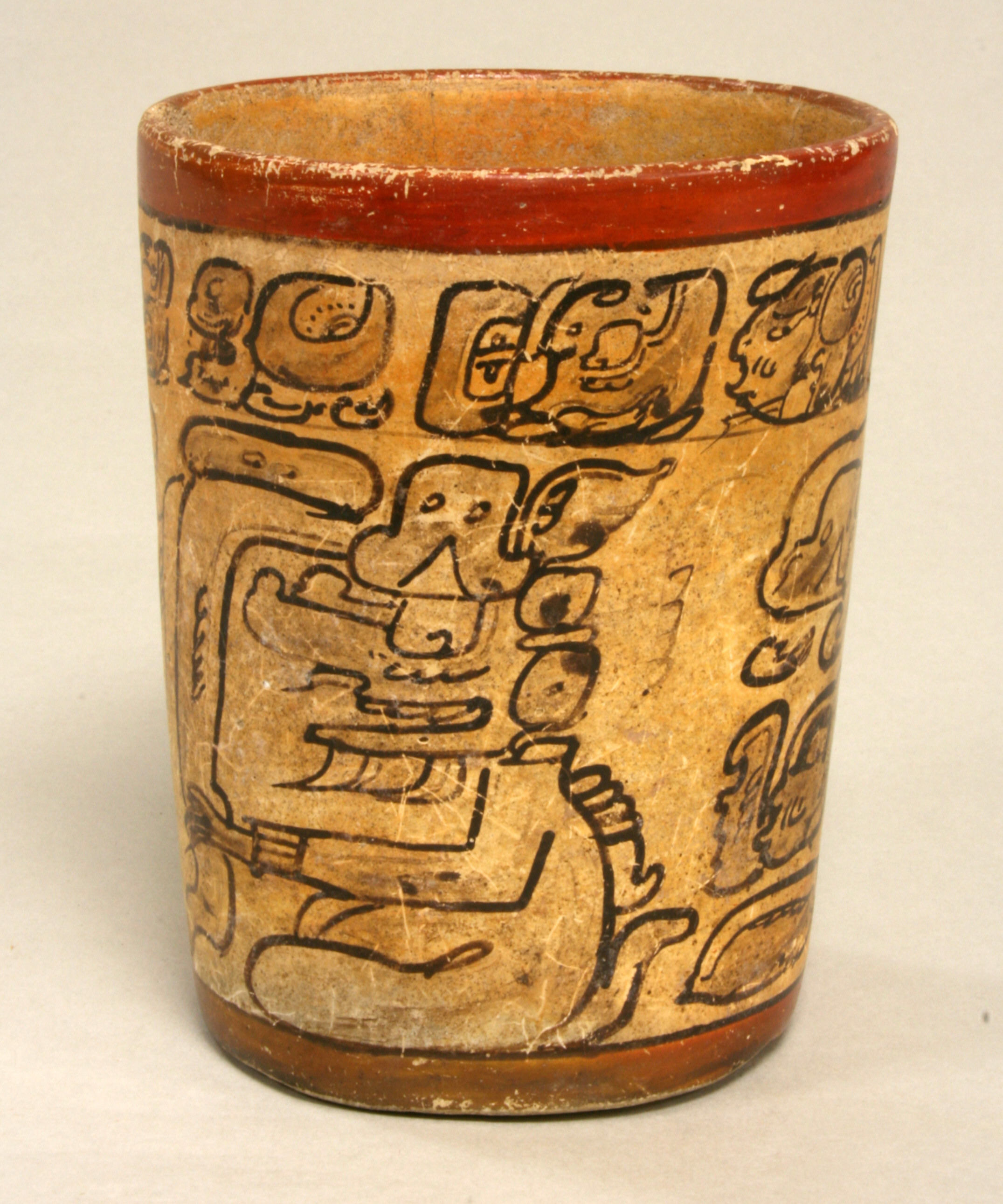Cylindrical Vessel
Not on view
This cylindrical vessel framed by red bands contains a hieroglyphic text around its rim and shows two seated gods. It is painted in the ‘codex-style’, and the artist used simple shading to emphasize the two figures. The deities could be a version of K’awiil, the Maya god of lightning, as evidenced by the smoking scrolls emerging from their foreheads.
‘Codex-style’ pots are so-called for the style of painting which bears a close resemblance to the four extant screen-fold Maya books, known as codices, located in Madrid, Paris, Dresden, and Mexico City. These books date to the Postclassic Period (ca. a.d. 1000–1492). The characteristics of the codex-style are a cream or yellowish slipped background, often framed by red bands above and below, and a black calligraphic line outlining figures and hieroglyphic texts. Sometimes the painters applied a gray wash to shade figures or other features. In contrast to the richly polychromed vases and bowls from the large corpus of Maya vessels, codex-style pots stand apart in their grayscale, which is almost certainly a reflection of their development vis-à-vis calligraphic books.
Due to rights restrictions, this image cannot be enlarged, viewed at full screen, or downloaded.
This artwork is meant to be viewed from right to left. Scroll left to view more.




